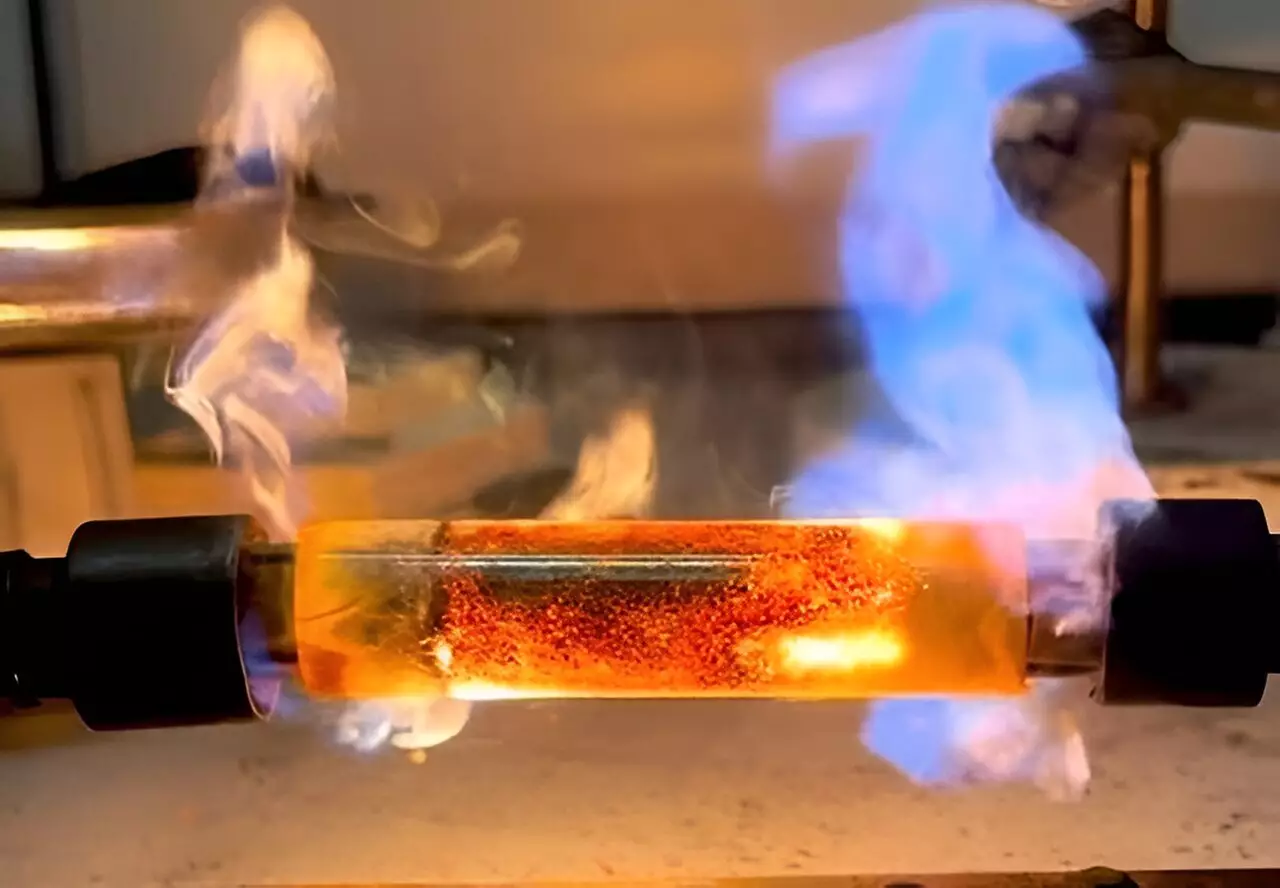

In a groundbreaking development, James Tour’s lab at Rice University has unveiled a new method called flash-within-flash Joule heating (FWF) that has the potential to revolutionize the synthesis of high-quality solid-state materials. The recent findings, which were published in Nature Chemistry on Aug. 8, showcase how this innovative technique could pave the way for a cleaner, faster, and more sustainable manufacturing process. Traditionally, the synthesis of solid-state materials has been plagued by time-consuming procedures and excessive energy consumption, leading to the generation of harmful byproducts. However, FWF offers a solution that enables gram-scale production of a diverse range of compounds in a matter of seconds, while significantly reducing energy consumption, water usage, and greenhouse gas emissions by more than 50%.
One of the key aspects of FWF’s success lies in its ability to overcome the limitations of conventional flash Joule heating methods, particularly in terms of conductivity. By incorporating an outer flash heating vessel filled with metallurgical coke and a semiclosed inner reactor containing the target reagents, the team led by Ph.D. student Chi Hun “Will” Choi and corresponding author Yimo Han, assistant professor of chemistry, materials science, and nanoengineering, has been able to generate intense heat of up to 2,000 degrees Celsius. This high temperature facilitates the rapid conversion of reagents into high-quality materials through heat conduction. As a result, more than 20 unique, phase-selective materials with exceptional purity and consistency have been successfully synthesized using FWF. This versatility and scalability make it an ideal candidate for the production of next-generation semiconductor materials that are notoriously difficult to synthesize using conventional methods, such as molybdenum diselenide (MoSe2), tungsten diselenide, and alpha phase indium selenide.
Apart from streamlining the synthesis process, FWF eliminates the need for conductive agents, thereby reducing the formation of impurities and byproducts. This advancement not only opens up new possibilities in the realms of electronics, catalysis, energy, and fundamental research but also offers a sustainable solution for manufacturing a wide array of materials. Furthermore, industries like aerospace stand to benefit greatly from FWF, as materials like MoSe2 produced through this method exhibit superior performance as solid-state lubricants. According to Han, FWF represents a transformative shift in material synthesis, ushering in a new era of efficiency and sustainability.
The introduction of flash-within-flash Joule heating (FWF) marks a significant advancement in the realm of material synthesis. This groundbreaking method developed by James Tour’s lab at Rice University sets a new standard for sustainable manufacturing, offering a faster, cleaner, and more efficient approach to producing high-quality solid-state materials. By addressing key challenges in traditional synthesis methods and enabling the synthesis of a diverse range of compounds with unparalleled purity and consistency, FWF has the potential to reshape industries and drive innovation in various sectors. As researchers continue to explore the possibilities of this novel technique, the future of material synthesis looks brighter than ever before.
Natural gas leaks are a growing concern in both urban and rural settings, with potential…
Recent groundbreaking research at the University of Vienna has unveiled a novel interplay of forces…
In recent years, perovskites have garnered significant attention in the fields of materials science and…
For decades, astronomers have probed the depths of the Milky Way, grappling with two perplexing…
Foreign direct investment (FDI) in developing nations has long been heralded as a path to…
As spring beckons in April and May, stargazers have the unique opportunity to witness nature's…
This website uses cookies.